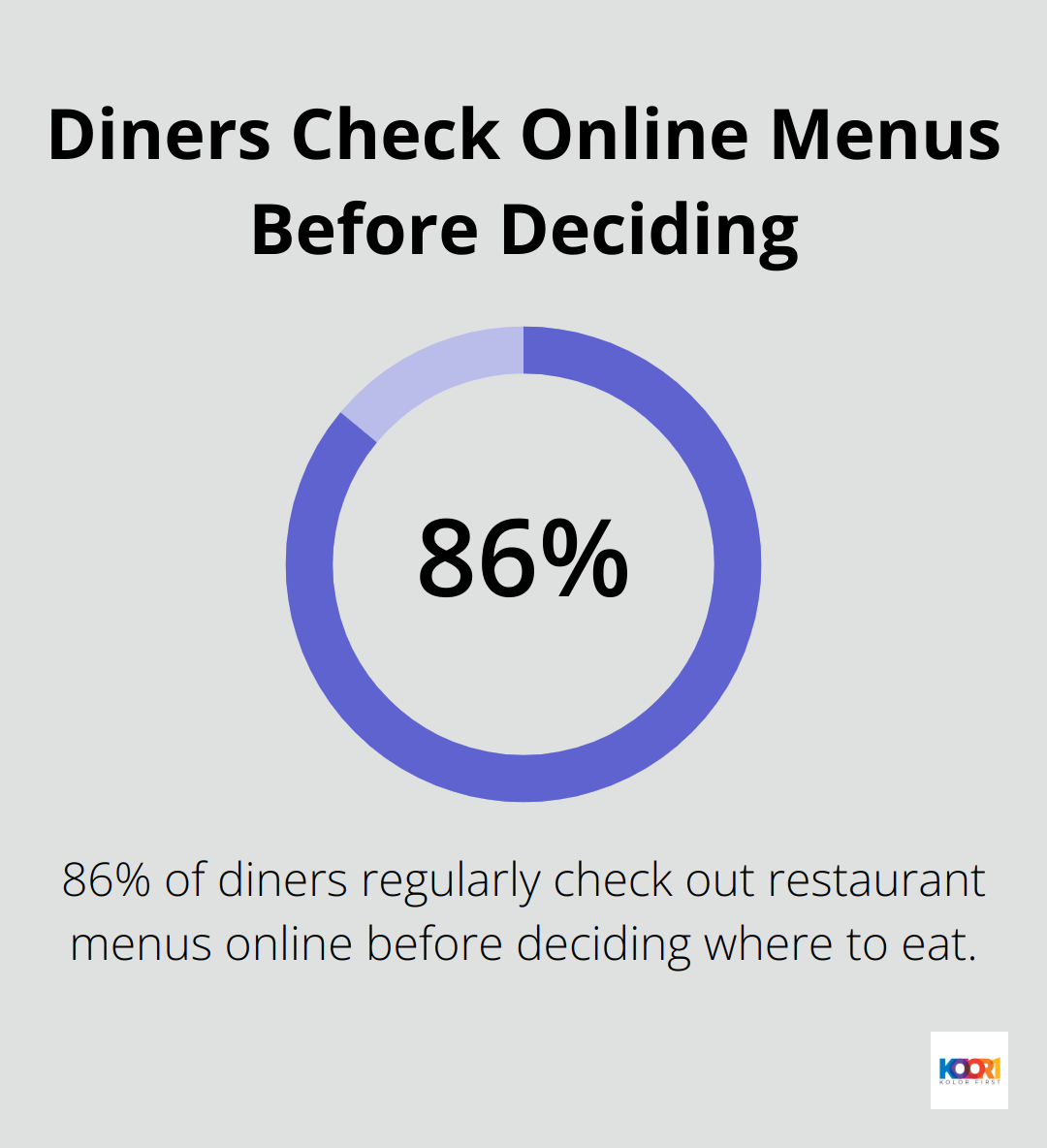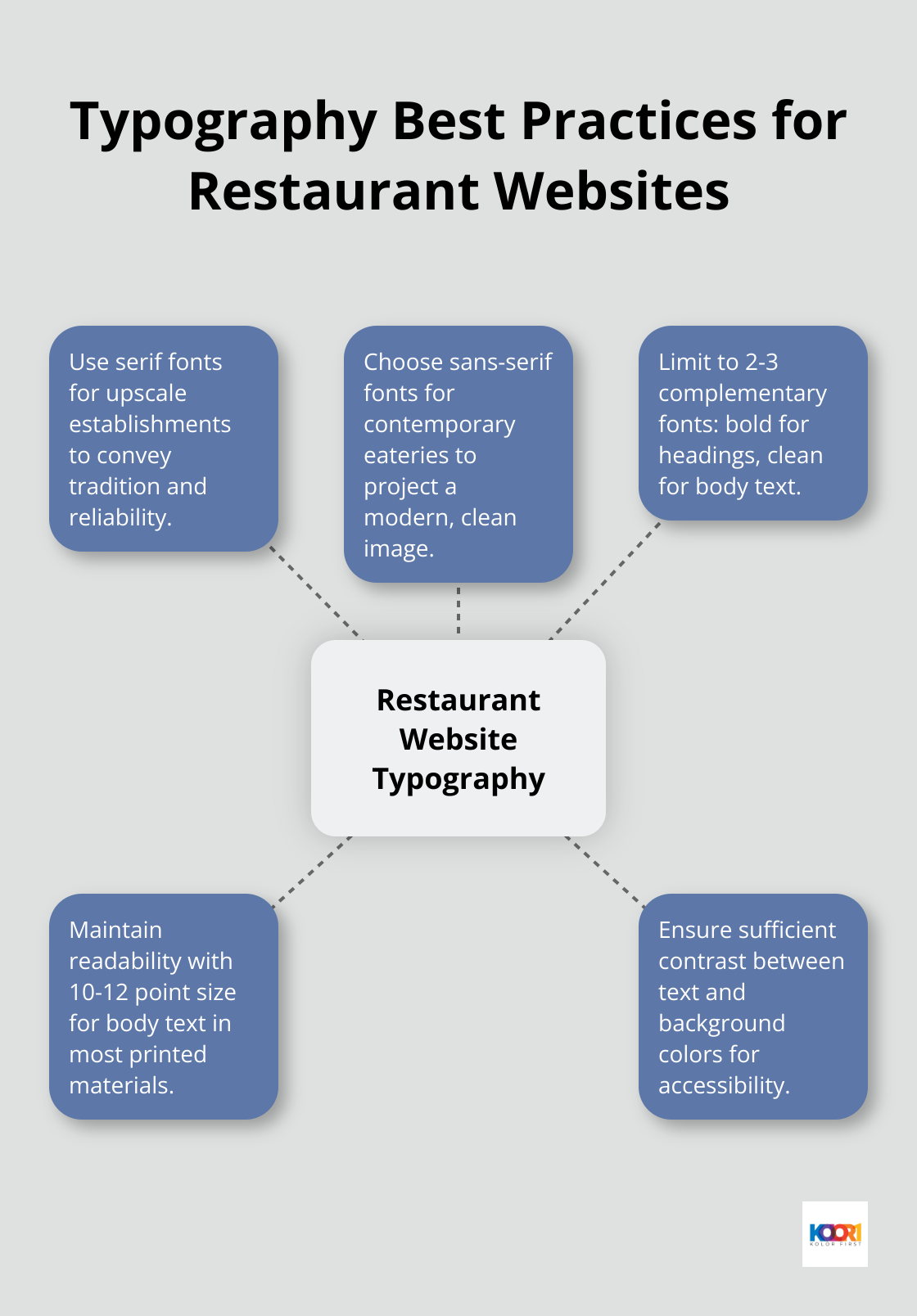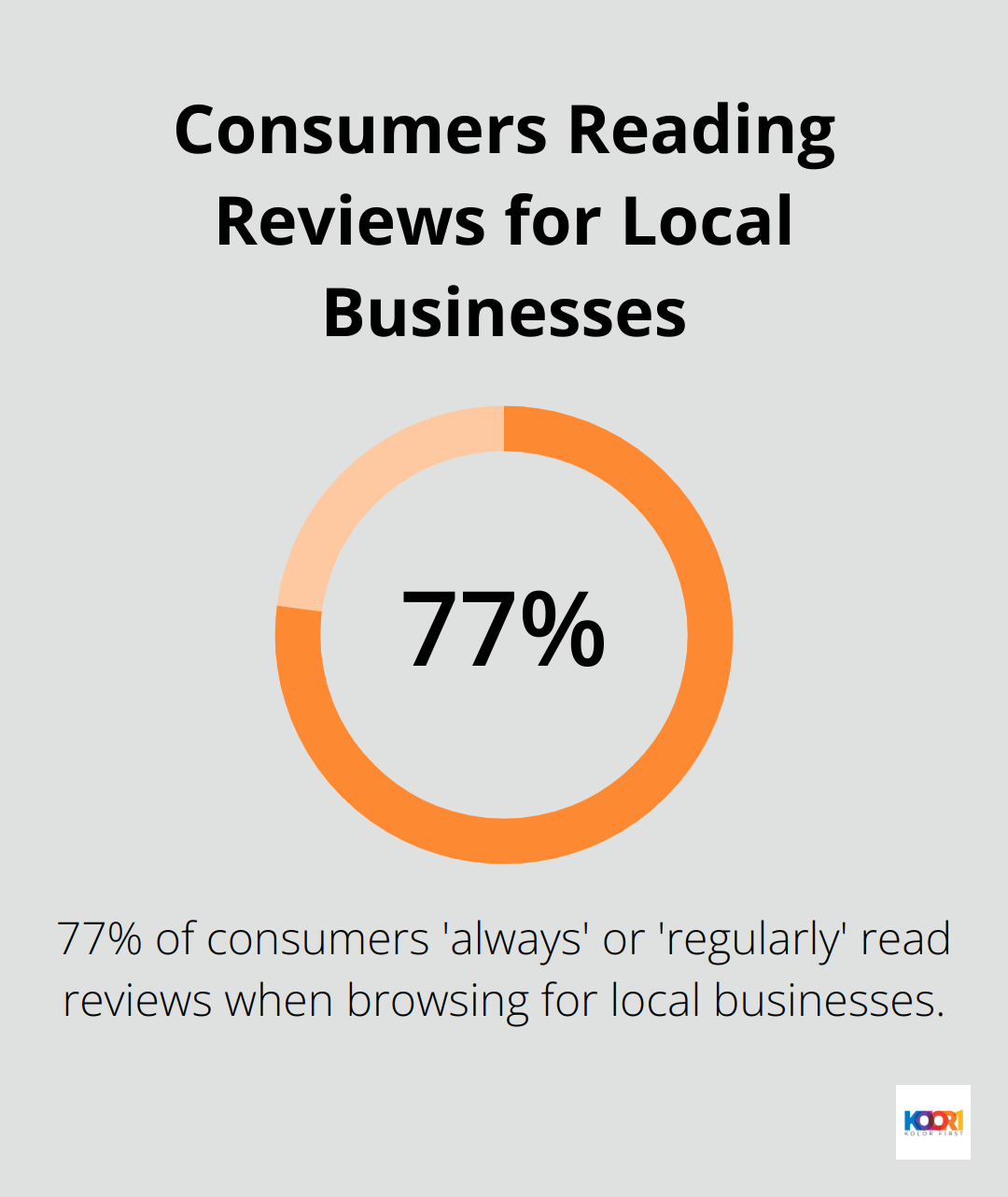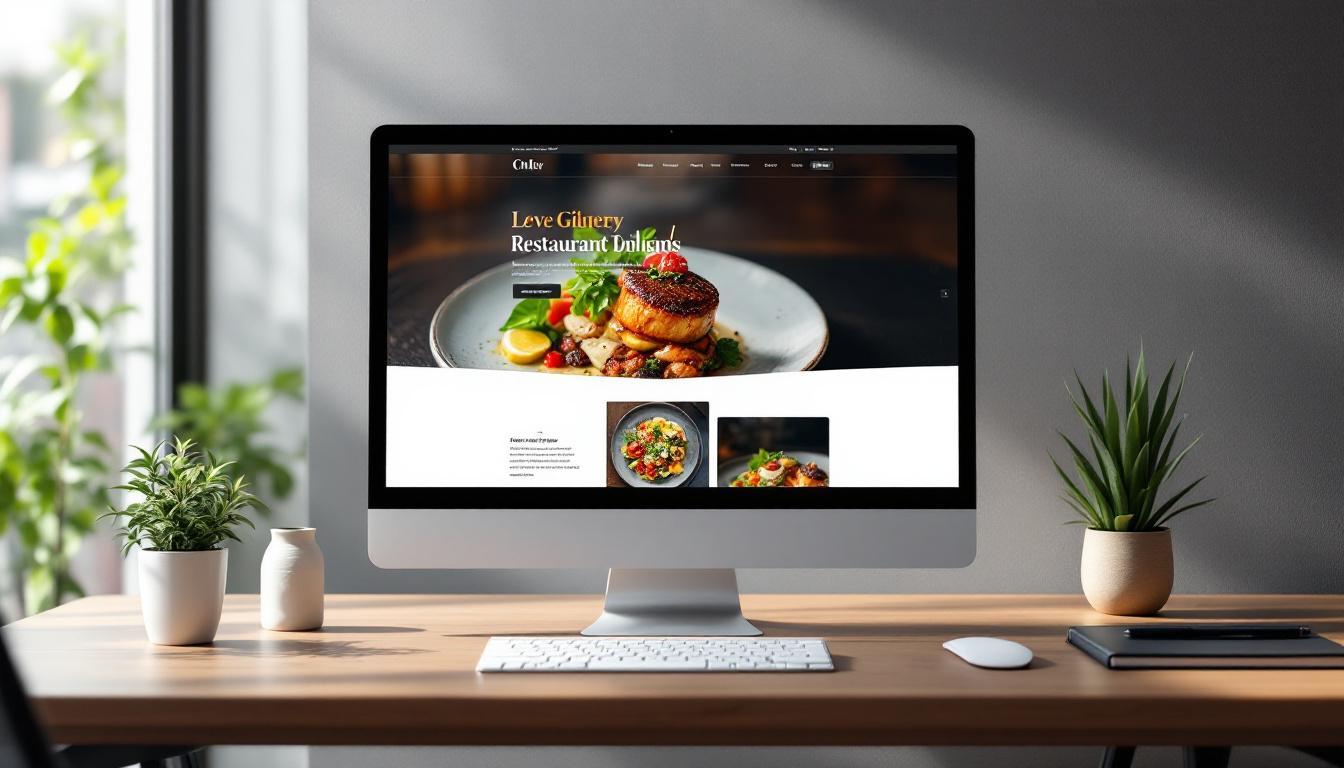At Kolorfirst LLC, we know that a well-designed restaurant website can make or break a dining establishment’s online presence.
In today’s digital age, potential customers often form their first impression of a restaurant through its website. That’s why mastering restaurant web design is essential for attracting and retaining diners.
This guide will walk you through the key elements of creating a stunning and effective restaurant website that not only looks great but also drives business results.
What Makes a Restaurant Website Effective?
Mouth-Watering Visuals
High-quality, appetizing food photography forms the cornerstone of any successful restaurant website. It attracts new customers and persuades clients to order. Professional food shots can trigger an instant response in potential diners. We recommend you invest in a professional food photographer who can capture your dishes in their best light. Showcase a variety of menu items, including popular dishes and seasonal specials, to give potential diners a tantalizing preview of your offerings.
User-Friendly Menu Design
Your online menu should be clear, easily accessible, and up-to-date. Avoid PDFs, as they can be difficult to read on mobile devices and aren’t search engine friendly. Create a dedicated menu page with a clean, responsive design instead. Organize dishes by category, include prices, and highlight any dietary options (vegetarian, gluten-free, etc.). A survey by OpenTable found that 86% of diners regularly check out restaurant menus online before deciding where to eat.

Seamless Ordering and Reservations
An online reservation or ordering system is essential for modern restaurant websites. An online booking system makes it easier for restaurants, pubs, bars, and other hospitality venues to manage reservations, and can also help reduce no-shows. For takeout and delivery, an in-house online ordering system can save you up to 30% in fees compared to third-party platforms. Make sure your system is easy to use and prominently displayed on your homepage.
Mobile-First Design
Over 60% of restaurant website traffic comes from mobile devices, according to Google. This makes a mobile-responsive design non-negotiable. Ensure your website looks great and functions smoothly on smartphones and tablets. This includes easy-to-tap buttons, readable text without zooming, and quick loading times. A mobile-friendly website can lead to a 30% increase in conversions, as reported by SearchEngine Journal.
Performance Optimization
A fast-loading website is critical for user experience and search engine rankings. Try to optimize image sizes, minimize code, and use caching techniques to improve your site’s speed. According to a study by Google, 53% of mobile users abandon sites that take longer than three seconds to load. This emphasizes the importance of a speedy, well-optimized website for retaining potential customers.
Now that we’ve covered the essential elements of an effective restaurant website, let’s explore how color psychology and typography can enhance your digital marketing and create a memorable brand experience.
How Colors and Fonts Boost Your Restaurant’s Online Appeal
At Kolorfirst LLC, we understand that visual elements play a crucial role in attracting and retaining customers on your restaurant’s website. Colors and typography are powerful tools that evoke emotions, set the mood, and reinforce your brand identity. Let’s explore how to leverage these elements effectively.
The Impact of Color in Restaurant Web Design
Colors significantly influence appetite and dining experiences. Red and orange stimulate hunger, while green conveys freshness and health. Blue, however, often suppresses appetite. A University of Rochester study found that people eat less from blue plates, indicating color’s influence on eating behavior.
When you select colors for your restaurant website, consider your cuisine type and brand personality. Earthy tones like browns and deep reds work well for steakhouses, while vibrant yellows and greens might suit a vegan café. Limit your color palette to 2-3 main colors to maintain a cohesive look. Tools like Adobe Color help create harmonious color schemes that align with your brand.
Typography: Your Silent Brand Ambassador
Your font choices subtly communicate your restaurant’s style and values. Serif fonts (e.g., Georgia or Times New Roman) often convey tradition and reliability, making them suitable for upscale establishments. Sans-serif fonts (e.g., Arial or Helvetica) project a modern, clean image, ideal for contemporary eateries.
For maximum impact, use two or three complementary fonts. Choose a bold, eye-catching font for headings and a clean, easily readable font for body text. For most printed materials, body text tends to work best between 10 and 12 points, depending on the typeface.

Balancing Aesthetics and Functionality
While aesthetics are important, never sacrifice readability for style. Maintain sufficient contrast between text and background colors. The Web Content Accessibility Guidelines (WCAG) recommend a contrast ratio of at least 4.5:1 for normal text and 3:1 for large text.
Try using a tool like WebAIM’s Contrast Checker to ensure your color combinations meet accessibility standards. This improves user experience and broadens your website’s reach to all potential customers.
Creating Visual Hierarchy
Effective typography creates a clear visual hierarchy, guiding users through your content. Use size, weight, and color to differentiate between headings, subheadings, and body text. Make your restaurant’s name or logo the largest element on the page, followed by main headings, then subheadings, and finally body text.
A Nielsen Norman Group study found that users typically read only 20% of the text on a page. Visual hierarchy ensures that even skimming visitors catch your most important information.
Your website’s visual design should complement and enhance your restaurant’s physical ambiance. Thoughtful application of color psychology and typography principles creates a cohesive brand experience that extends from your physical location to your digital presence. Now, let’s explore how user experience (UX) considerations can further enhance your restaurant’s website and drive more customers to your tables.
How to Optimize User Experience on Your Restaurant Website
Streamline Your Site Navigation
Your website’s navigation should be intuitive and effortless. Try to create a simple menu structure with clear labels. Users often leave Web pages in 10–20 seconds, but pages with a clear value proposition can hold people’s attention for much longer. Make your most important information – menu, reservations, and contact details – accessible within one or two clicks.
A sticky header that remains visible as users scroll allows easy access to key navigation elements. This can increase page views by up to 25% (CXL Institute study).
Boost Your Website’s Speed
Page load time impacts user experience and search engine rankings. Google reports that 53% of mobile users abandon sites that take longer than three seconds to load. To improve your website’s speed:
- Optimize images (compress them and use modern formats like WebP)
- Minimize HTTP requests (combine files and use CSS sprites)
- Leverage browser caching to store static files
- Use a Content Delivery Network (CDN) to improve the efficiency and reliability of your website
Tools like Google’s PageSpeed Insights help you identify and address specific performance issues on your site.
Prioritize Accessibility
Make your website accessible to all users, including those with disabilities. The Web Content Accessibility Guidelines (WCAG) provide a framework for creating accessible content. Key considerations include:
- Provide alt text for images
- Ensure sufficient color contrast
- Make your site keyboard-navigable
- Use descriptive link text
These features can expand your potential customer base and improve overall user experience for all visitors.
Showcase Customer Reviews
Customer reviews and testimonials influence dining decisions. A BrightLocal survey found that 77% of consumers ‘always’ or ‘regularly’ read reviews when browsing for local businesses. Integrate reviews from platforms like Google, Yelp, or TripAdvisor directly on your website.

Feature a rotating selection of positive reviews on your homepage, and create a dedicated testimonials page for more in-depth feedback. This social proof can boost credibility and encourage potential customers to choose your restaurant.
To further optimize your business success in today’s competitive landscape, consider incorporating digital marketing strategies alongside your website optimization efforts.
Final Thoughts
Restaurant web design combines visual appeal with functionality to create a compelling online presence. A well-designed website showcases mouth-watering visuals, user-friendly menus, and seamless ordering systems. Mobile-first design and performance optimization ensure a smooth experience for all visitors, while thoughtful color choices and typography reinforce brand identity.
User experience considerations, such as intuitive navigation and fast loading times, keep potential diners engaged with your site. Customer reviews add social proof and build trust, encouraging visitors to choose your restaurant. A visually striking and easy-to-navigate website can significantly impact your restaurant’s success in the digital landscape.
We at Kolorfirst LLC specialize in innovative branding and digital marketing solutions for restaurants. Our expertise in creative branding, digital marketing, and UX consulting (which includes restaurant web design) can elevate your online presence and drive growth for your establishment. Your website often serves as the first interaction potential customers have with your restaurant, so make it count with a stunning design that compels them to visit.






